Leopard Slug
Invertebrates don’t capture out attention much. Invertebrates are creatures without a backbone, which of course covers insects, but some other creatures too. You may have seen this one in your garden- as a matter of fact, I’ve seen many more of these near my front door than in the wild.
Slugs spend most of the day hidden under things, but they come out at night or in rainy conditions
Slugs are land-dwelling molluscs without an obvious shell. Snails of course carry their shell homes on their backs, but slugs are soft-bodied- though there are exceptions that we’ll talk about later. They eat just about everything, and are sometimes classified as detrivores- a creature that eats dead plants and fungi. This is a very useful thing for them to do. Unfortunately, they also eat garden plants and crops, and are considered pests by many people.
Leopard Slugs are a common slug found over much of the world, having spread from its native Europe. These are the slugs I see the most of, even though they are nocturnal. They have spots and stripes that give them their characteristic pattern. They can grow to be 4 to 8 inches long, which is a good-sized slug.
It all started with the Rose of Sharon bush next to my front door. I would see the occasional slug eating fallen flowers from this bush. When I started feeding birds and squirrels unsalted peanuts, I noticed that this attracted even more slugs, who would saw away at the peanuts I left laying around. They would repeatedly head straight towards the places where I left these peanuts- smart little things! I’m thinking I created a very local population boom, because there were a good amount of slugs around suddenly. I’m fine with this since I’m not a serious gardener.
This picture was taken at night with a flash- hungry slugs caught eating fallen flower blooms
Leopard Slugs are almost always found around human habitations (with the curious exception of Ireland, for whatever reason). They seem to be thriving around my place! They live an average of 2 to 3 years.
A young slug near an adult climbing a wall
An interesting fact about these creatures- they have a small shell inside their bodies. Perhaps this is an ancient remnant of a shell home they used to carry on their backs.
Slugs enjoy rainy nights
When the weather is dry, slugs will take a dip in my little birdbath
Leopard Slugs have both male and female organs for reproduction. Check out YouTube for many film clips of their remarkable mating ritual!
Notice the round indentation on the right side of the above-pictured slug. This is its pneumostome, or ‘nose’ hole. Slugs are rather different than you or me in more ways than one.
This slug climbs a metal pole…
Near the pole, another slug has found peanuts on a wall- note how it looks almost transparent in the light
It looks like the slug is trying to reach the wall from the pole as if it senses food…
Slug meets slug…
One slug pulls in its antennae (or ‘optical tentacles’)- a defense mechanism when it encounters another moving thing
You’ve probably noticed slug trails on pavement before- this is a mucus secreted by the slug to make its sliding movement easier. It also may be a signal to other slugs. The mucus also acts as a defense mechanism against predators.
Here’s a slug out in the wild- they’re out there, too
Overall, slugs are a vital part of the ecosystem. They are part of nature’s clean-up crew. I know they can be aggravating to gardeners, but remember, we all have a place in the grand scheme of things.


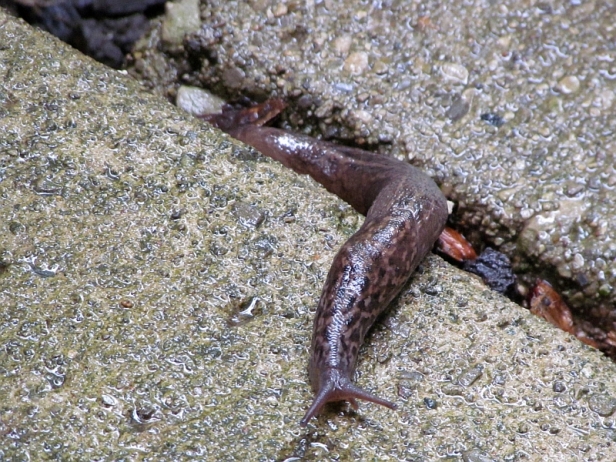
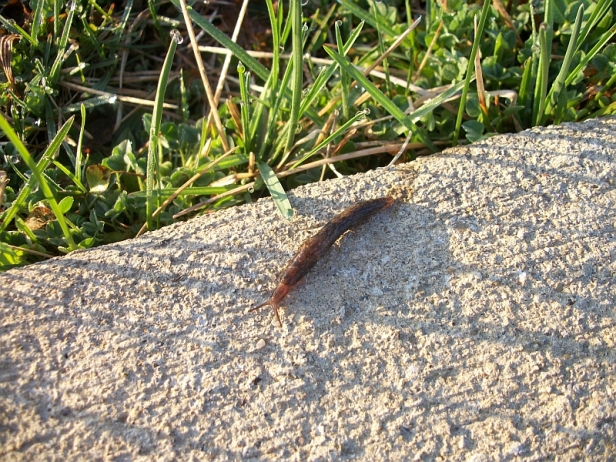
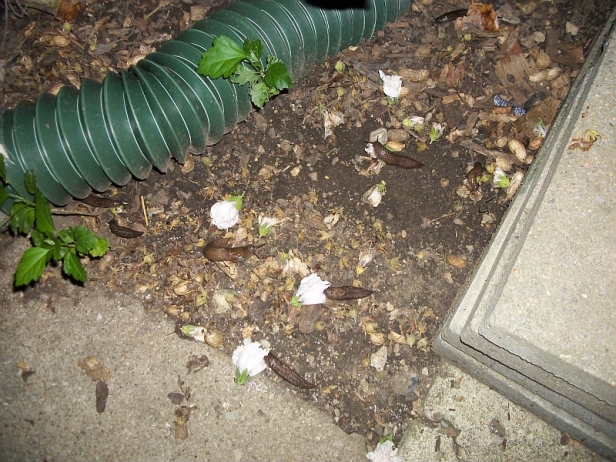
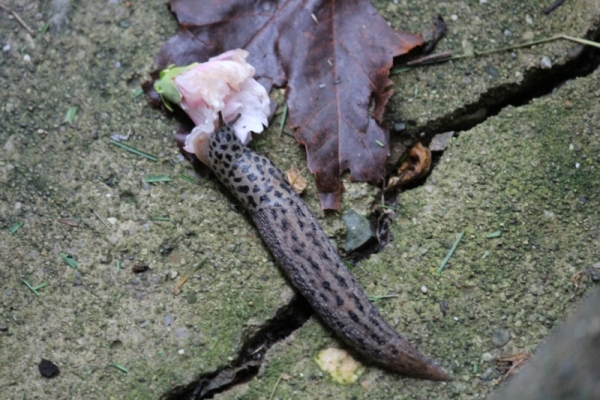
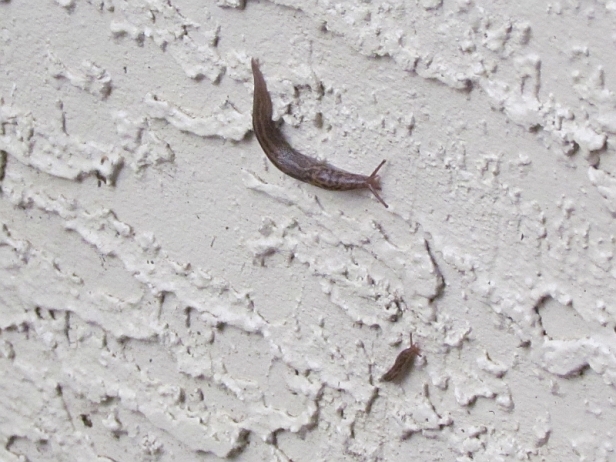
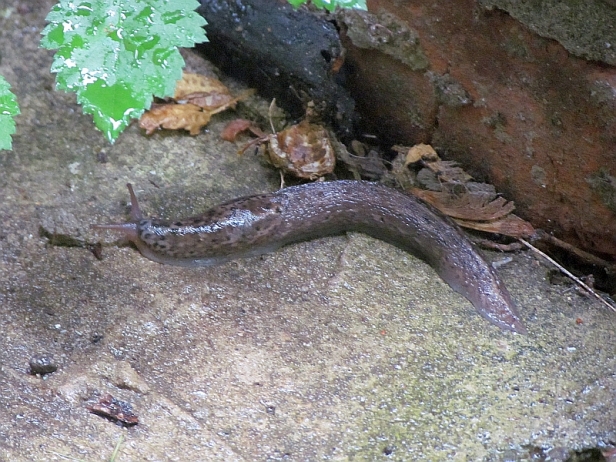
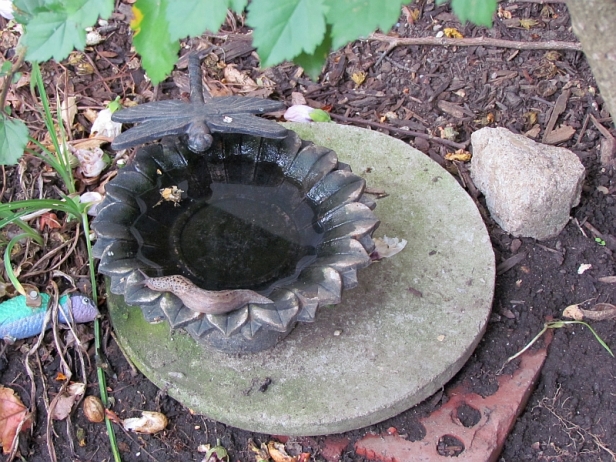
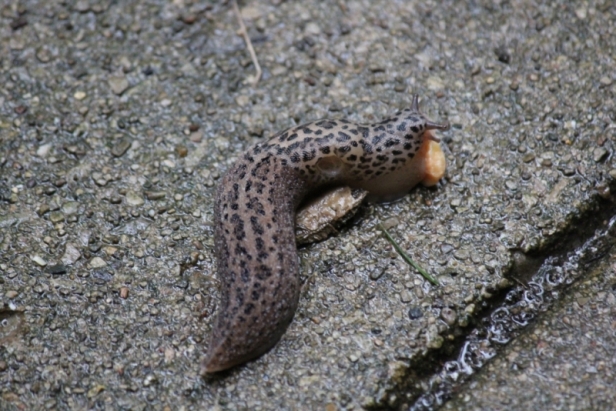
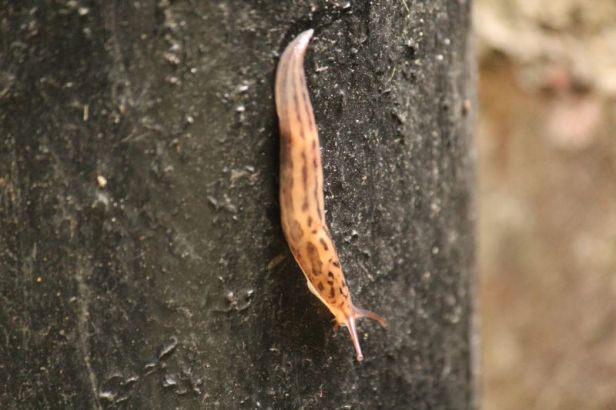
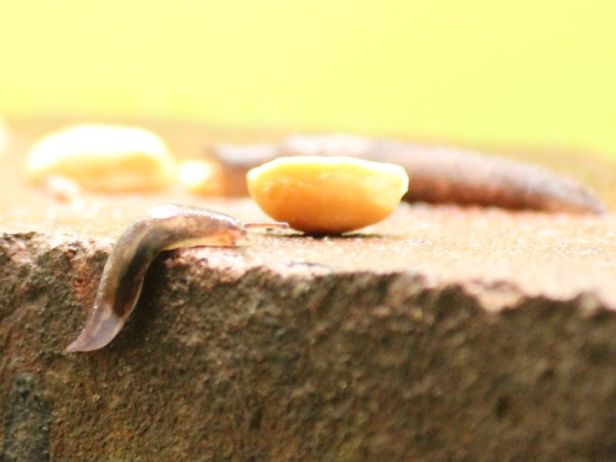
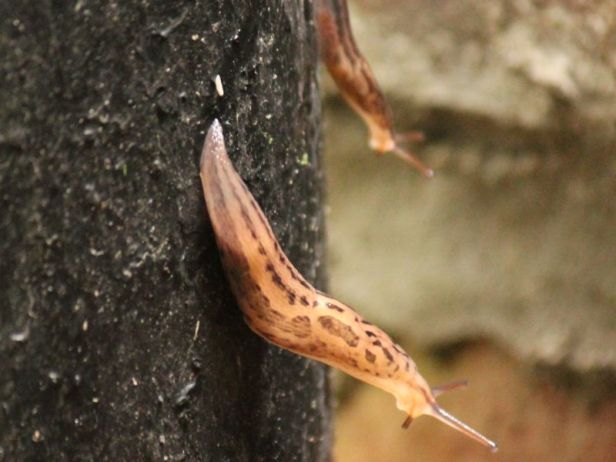
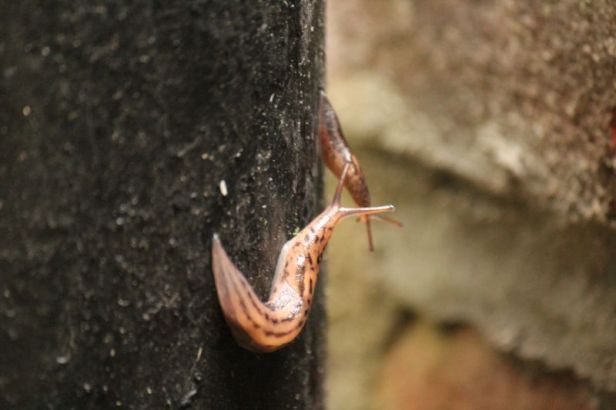
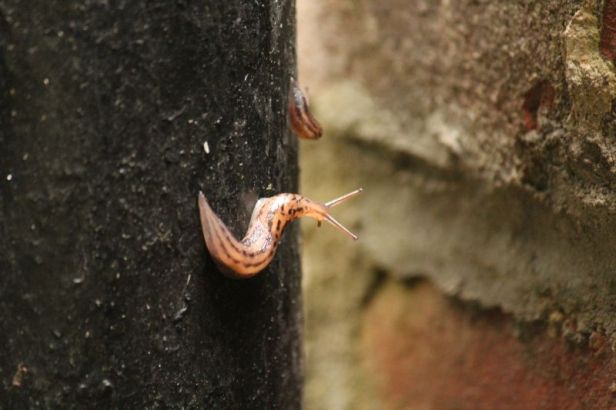
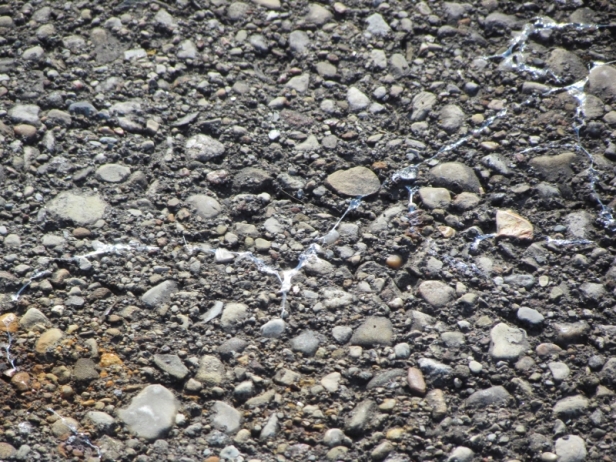
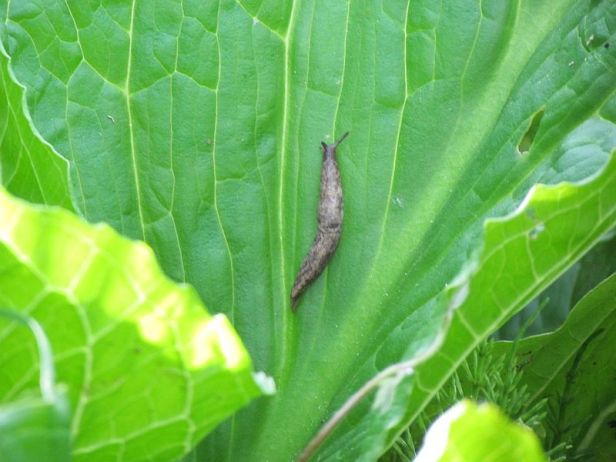
Tracy, always enjoy reading and learning from your posts. Were you a teacher? You sure are now.
Thanks John! There’s a teacher in my family, but not me- though I worked as part of the information staff at a local library for some years. I think that’s where the interest in figuring out things comes from.
Very informative, but I have a thing about slugs. Nothing against them really, but it has to do with the way that some one else reacted to them, and not in the way that you may think.
Now there’s a story for some future post!
Highly doubtful, that happened at a rather low point in my life.
We have seen these massive leopard slugs too, they would be scary if they could move faster! I shall take more interest from now on, but I wish they didn’t eat my hostas!
They can reach impressive sizes, Jo! Sorry to hear they’ve taken a fancy to your garden though!
Tracy, really informative, I had no idea and always wondered about the purpose of slugs. You captured some great photos of these creatures as well. Thanks for sharing!
Thank you, Joleen!
That’s all very well but I want to eat my strawberries and not donate them to the slug community.
Hah! Understandable!
Nice shots of these interesting little creatures.
Thanks, Pat!
Lots of information here and I thank you for it Tracy. You might not want to tell your neighbors that you are feeding slugs-especially if they have gardens.
Luckily I live in an apartment community and the younger folk next door show no sign of green thumbs!
I was fine when they went after the dry cat food. But once they started eating the milkweeds… Little ones get crushed. Big ones get salted. Lucky for them, I recently found out that one of the feral cats is allergic to diatomaceous earth. So, I only kill those I see by hand.
I’m sensing a trend in the comments!
Alas I associate slugs with holes in my hostas. So I save up leftover cheap beer to serve them when things get out of hand…
I hear they like beer! 😉
Great post on a subject most of us know little about!
Thanks Robert!
I can always see where they’ve been. Thanks for the info.
Sure, Patti!
Since they are a non-native, as are most rats and mice that plague human habitats, I am for pest control.